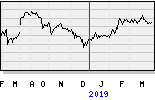
Widespread adoption of polylactic acid (PLA) has been slowed due to lack of a broad supply chain for the renewably sourced material that has significant potential in packaging, and even some durable applications.
The giant in the room has been NatureWorks, which has a PLA production capacity of 150,000 metric tons per year in Nebraska and has announced tentative plans to build a PLA production plant in Thailand. NatureWorks, which is owned by Cargill and PTT Chemical, has put a lot of financial muscle into market development and has had some notable successes, but has faced some resistance from customers concerned that there has been no significant second source of supply.
But now the second largest producer in the world (5,000 metric tons per year), Zhejiang Hisun Biomaterials Co. is proceeding with plans to expand its capacity to 50,000 metric tons per year in in Taizhou, China. The expansion was first announced a while ago, but has been delayed about two to three years due to slower-than-expected adoption of PLA.
Meanwhile, the major European-based player, Corbion Purac, said it intends to build a 75,000 metric tons per year PLA plant in Thailand, but only if customers will commit to at least one-third of the projected capacity in advance.
Corbion conducted a study indicating that the PLA market is estimated to reach 3 million metric tons by 2020, assuming a PLA price of $1.10 per pound. According to Corbion, PLA capacity is almost sold out.
The expansion in natural gas supply produced by fracking in the United States is sure to unsettle future American demand for PLA, which often competes with polyethylene and polypropylene, the two plastics that will benefit the most from fracking. Prices for those two plastics will be under pressure when new plants built for the new feedstock streams start coming on line in two to three years. The situation is different in China, where processors already pay a premium–as much as double–for plastic resins compared to the United States. Plastics made from crop waste in China will likely have a cost advantage over plastics made from fossil fuels.
Corbion Purac’s path to commercialization is different, eyeing higher-priced durable applications for its optimized PLA compounds.
vertaalmachine
Een brede toepassing van polymelkzuur (PLA) is vertraagd door een gebrek aan een brede keten voor de duurzame bronnen materiaal aanzienlijk potentieel verpakking en zelfs bepaalde duurzame toepassingen.
De reus in de kamer is geweest NatureWorks, die een PLA productiecapaciteit van 150.000 ton per jaar heeft in Nebraska en heeft aangekondigd voorzichtige plannen om een PLA productie-fabriek te bouwen in Thailand. NatureWorks, dat eigendom is van Cargill en PTT Chemical, heeft veel financiële spier gezet in de ontwikkeling van de markt en heeft enkele opmerkelijke successen geboekt, maar heeft wat weerstand vanuit bezorgd dat er geen significante tweede bron van het aanbod is geweest klanten geconfronteerd.
Maar nu de tweede grootste producent ter wereld (5.000 ton per jaar), Zhejiang Hisun Biomaterialen Co verloopt met plannen om de capaciteit tot 50.000 ton per jaar aan in Taizhou, China uit te breiden. De uitbreiding werd voor het eerst aangekondigd een tijdje geleden, maar is vertraagd over twee tot drie jaar als gevolg van lagere dan verwachte goedkeuring van PLA.
Intussen is de belangrijkste in Europa gevestigde speler, Corbion Purac, zei dat het van plan is om een 75.000 ton per jaar PLA fabriek te bouwen in Thailand, maar alleen als klanten zullen verbinden om ten minste een derde van de verwachte capaciteit van tevoren.
Corbion heeft een studie uitgevoerd waaruit blijkt dat de PLA markt wordt geschat op 3 miljoen ton in 2020, uitgaande van een PLA prijs van $ 1,10 per pond. Volgens Corbion, wordt PLA capaciteit bijna uitverkocht.
De uitbreiding levering van aardgas door fracking in de Verenigde Staten is zeker toekomstige Amerikaanse vraag naar PLA, die vaak concurreert met polyethyleen en polypropyleen ontregelen, de twee kunststoffen die de meeste zullen profiteren fracking. De prijzen voor deze twee kunststoffen onder druk zullen staan wanneer nieuwe installaties gebouwd voor de nieuwe grondstof streams beginnen binnen te komen op de lijn in twee tot drie jaar. De situatie is anders in China, waar de processors een premie-zoveel als dubbel-voor kunststof harsen in vergelijking met de Verenigde Staten al betalen. Plastics gemaakt van afval van gewassen in China zal waarschijnlijk een kostenvoordeel ten opzichte van plastic gemaakt uit fossiele brandstoffen.
Corbion Purac's pad naar commercialisering is anders, bekeek duurdere duurzame toepassingen voor zijn geoptimaliseerd PLA verbindingen.
